![]()
![]()
![]()
Use LEFT and RIGHT arrow keys to navigate between flashcards;
Use UP and DOWN arrow keys to flip the card;
H to show hint;
A reads text to speech;
42 Cards in this Set
- Front
- Back
|
Women in love t is a sequel to his earlier novel The Rainbow (1915), and follows the continuing loves and lives of the Brangwen sisters, Gudrun and Ursula. Gudrun Brangwen, an artist, pursues a destructive relationship with Gerald Crich, an industrialist. Lawrence contrasts this pair with the love that develops between Ursula and Rupert Birkin, an alienated intellectual who articulates many opinions associated with the author. The emotional relationships thus established are given further depth and tension by an intense psychological and physical attraction between Gerald and Rupert. The novel ranges over the whole of British society before the time of the First World War and eventually ends high up in the snows of the Tyrolean Alps. Ursula's character draws on Lawrence's wife Frieda, and Gudrun on Katherine Mansfield, while Rupert Birkin has elements of Lawrence himself, and Gerald Crich of Mansfield's husband, John Middleton Murry.[1] |
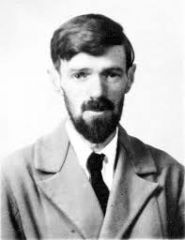
David Herbert Lawrence |
|
|
The plumed serpent The novel has a contemporary setting during the period of the Mexican Revolution. It opens with a group of tourists visiting a bullfight inMexico City. One of them, Kate Leslie, departs in disgust and encounters Don Cipriano, a Mexican general. Later she meets his friend, an intellectual landowner Don Ramón, and travels to Sayula, a small town set on a lake. Ramón and Cipriano are leading a revival of a pre-Christian religion and Kate becomes drawn into their cult. |
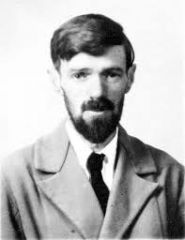
David Herbert Lawrence |
|
|
Lady Chatterley's lover The story concerns a young married woman, Constance (Lady Chatterley), whose upper-class husband, Clifford Chatterley, described as a handsome, well-built man, has beenparalysed from the waist down due to a war injury. In addition to Clifford's physical limitations, his emotional neglect of Constance forces distance between the couple. Her sexual frustration leads her into an affair with the gamekeeper, Oliver Mellors. The class difference between the couple highlights a major motif of the novel which is the unfair dominance of intellectuals over the working class. The novel is about Constance's realisation that she cannot live with the mind alone; she must also be alive physically. This realisation stems from a heightened sexual experience Constance has only felt with Mellors, suggesting that love can only happen with the element of the body, not the mind. |
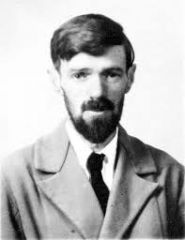
David Herbert Lawrence |
|
|
The Hobbit |
John Ronald Reuel Tolkien (jrr tolkien) |
|
|
The lord of the rings: 1)The fellowship of the ring 2) The two towers 3) The return of the king
|
John Ronald Reuel Tolkien |
|
|
The Simarillon |
John Ronald Reuel Tolkien |
|
|
Crome Yellow Crome Yellow is in the tradition of the English country house novel, as practiced by Thomas Love Peacock, in which a diverse group of characters descend upon an estate to leech off the host. They spend most of their time eating, drinking, and holding forth on their personal intellectual conceits. There is little plot development. |

Aldous Huxley
(ćpunek hehe) |
|
|
Those barren leaves Stripping the pretensions of those who claim a spot among the cultural elite, it is the story of Mrs. Aldwinkle and her entourage, who are gathered in an Italian palace to relive the glories of the Renaissance. For all their supposed sophistication, they are nothing but sad and superficial individuals in the final analysis. |
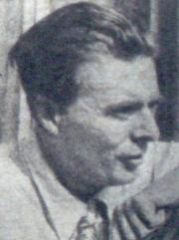
Aldous Huxley |
|
|
Point counter point Aldous Huxley's lifelong concern with the dichotomy between passion and reason finds its fullest expression both thematically and formally in his masterpiece Point Counter Point. By presenting a vision of life in which diverse aspects of experience are observed simultaneously, Huxley characterizes the symptoms of "the disease of the modern man" |
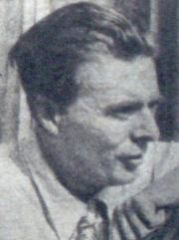
Aldous Huxley |
|
|
Brave New World |
Aldous Huxley |
|
|
Eyeless in Gaza author's lifelong concern with the dichotomy between passion and reason finds its fullest expression both thematically and formally in his masterpiece Point Counter Point. By presenting a vision of life in which diverse aspects of experience are observed simultaneously, Huxley characterizes the symptoms of "the disease of the modern man" |
Aldous Huxley |
|
|
Burmese days Burmese Days is set in 1920s imperial Burma, in the fictional district of Kyauktada.[10] As the story opens U Po Kyin, a corrupt Burmese magistrate, is planning to destroy the reputation of the Indian Dr. Veraswami. The Doctor's main protection is his friendship with John Flory who, as a pukka sahib (European white man), has higher prestige. Dr.Veraswami wants the privilege of becoming a member of the British club because he thinks that if his standing with the Europeans is good, U Po Kyin's intrigues against him will not prevail. U Po Kyin begins a campaign to persuade the Europeans that the doctor holds disloyal, anti-British opinions, and believes anonymous letters with false stories about the doctor 'will work wonders.' He even sends a subtly threatening letter to Flory. |
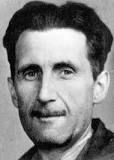
George Orwell |
|
|
Homage to catalonia author's personal account of his experiences and observations in the Spanish Civil War. |
GEORGE ORWELL |
|
|
Animal Farm |
George Orwell
|
|
|
Nighteen eighty- four |
George Orwell |
|
|
The man within It tells the story of Francis Andrews, a reluctant smuggler, who betrays his colleagues and the aftermath of his betrayal. |
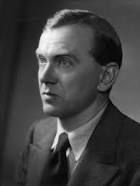
Henry Graham Greene angielski powieściopisarz idramaturg. Autor powieści psychologicznych, często z sensacyjną akcją wykorzystywaną dla ukazania problematyki etyczno-religijnej. Zaliczany jest do twórców o światopoglądzie katolickim. Pracował także jako dziennikarz i krytyk. |
|
|
BRIGHTON ROCK the novel is a murder thriller set in 1930s Brighton. The title is a reference to a confectionery traditionally sold at seaside resorts, used as a metaphor for human character. |
Henry Graham Greene |
|
|
The power and the glory The novel tells the story of a Roman Catholic priest in the Mexican state of Tabasco during the 1930s, when the Mexican government was trying to suppress the Catholic Churc |
Henry Graham Greene |
|
|
The heart and the matter The book details a life-changing moral crisis for Henry Scobie. Greene, a British intelligence officer in Freetown, Sierra Leone, drew on his experience there. |
Henry Graham Greene |
|
|
The end of the affair et in London during and just after the Second World War, the novel examines the obsessions, jealousy and discernments within the relationships between three central characters: writer Maurice Bendrix; Sarah Miles; and her husband, civil servant Henry Miles. |
Henry Graham Greene |
|
|
-Stamboul train |
Henry Graham Greene |
|
|
A gun for sale |
Henry Graham Greene |
|
|
The confidential agent |
Henry Graham Greene |
|
|
the ministry of fear |
Henry Graham Greene
|
|
|
Our man in Havana |
henry graham greene |
|
|
the quiet american
|
henry graham greene |
|
|
the comedians
|
henry graham greene
|
|
|
The human factor |
Graham greene |
|
|
Murphy The plot of Murphy follows an eponymous "seedy solipsist" who lives in a soon-to-be-condemned apartment in West Brompton. The novel opens with the protagonist having tied himself naked to a rocking chair in his apartment, rocking back and forth in the dark. This seems to be a habit for Murphy, who in carrying out the ritual attempts to enter a near-if-not-totally-nonexistent state of being (possibly something akin to sensory deprivation), which he finds pleasurable. |
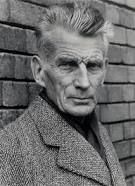
Samuel Beckett irlandzki dramaturg, prozaik ieseista, tworzący początkowo w języku angielskim, a od 1945 – francuskim. Jeden z twórców teatru absurdu. Jego powieści są pozbawiane tradycyjnej narracji, utrzymane w klimacie skrajnego pesymizmu i podkreślające bezsens ludzkiej egzystencji. |
|
|
Watt Narrated in four parts, it describes Watt's journey to (and within) Mr Knott's house; here he becomes the reclusive owner's manservant, replacing Arsene, who delivers a long valedictory monologue at the end of section one. In section two Watt struggles to make sense of life at Mr Knott's house, experiencing deep anxiety at the visit of the piano tuning Galls, father and son, and a mysteriously language-resistant pot, among other incidents. |
Samuel Beckett |
|
|
1)MOLLOY 2)MALONE DIES 3)THE UNNAMABLE |
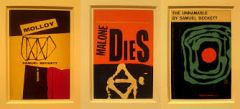
The Beckett Trilogy Samuel Beckett |
|
|
ultramarine the novel follows a young man aboard a steamer in the early 20th century and his struggle to gain acceptance from his crew mates |
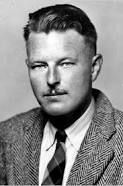
MALCOLM LOWRY |
|
|
under the volcano The novel tells the story of Geoffrey Firmin, an alcoholic British consul in the small Mexican town of Quauhnahuac, on the Day of the Dead, 2 November 1938. |
Malcolm Lowry |
|
|
Lunar Caustic Bill Plantagenet is a British jazz pianist, alcoholic, ferving reader of Melville and passionate about big boats. When he arrives to New York, finds that everything in his life have been sinking and losses, like his own band and his companion, Ruth. His pilgrimage by the taverns of the city port culminates in a psychiatric hospital, in fact a hell, or a stranded boat, depending on how you look, a prison, where hell share his time and fortune with sailors, drunken, poor and solemnity characters like the old Kalowsky evicted, the young Garry or Battle, the black guy. While watching the boats passing by the East River Bill understands that Dr. Claggart, the psychiatrist who is in care of him, will never heal his sick soul. |
Malcolm Lowry |
|
|
Lord of the flies |
William Golding |
|
|
The inheritors The concerns of the extinction of one of the last remaining tribes of Neanderthals at the hands of the more sophisticated (and malevolent) Homo sapiens. |
William Golding |
|
|
Pincher Martin the survival and psychophysical, spiritual and existential plight of one Christopher Hadley "Pincher" Martin, a temporary naval lieutenant and the sole survivor of a military torpedo destroyer which sinks in the North Atlantic Ocean. Martin is unconscious at the opening of the novel, but wakes in complete darkness, submerged, before nearly drowning after being thrown into the side of a rocky islet. After desperately calling out for help, and receiving none, he correctly deduces that his naval crew is dead; and, disoriented, he scrambles up the rock to avoid the constant battering of the surrounding waves. Once on the island, he starts his struggle for survival but, as time goes by, a series of strange and increasingly terrifying events, which he at first dismisses as hallucinations, slowly cause him to lose his grip on reality. |
William Golding |
|
|
Free Fall Samuel ('Sammy') Mountjoy, a talented painter but a directionless and unhappy man, is a prisoner of war in Germany during WWII. Recently some inmates escaped from his camp. A Gestapo officer, Dr. Halde, interviews Sammy in an attempt to find out about the escape organisation; when Sammy denies knowing anything, Halde has him locked in a small store-room, awaiting possible torture. Under the pressure of the darkness, isolation and horrified anticipation he gradually breaks down; in a series of long flashbacks, he wonders what brought him to his current state, and in particular, how he lost his freedom. |
William Golding |
|
|
The Spire "A dark and powerful portrait of one man's will", it deals with the construction of the 404-foot high spire loosely based on Salisbury Cathedral; the vision of the fictional Dean Jocelin. In this novel,author utilises stream of consciousness writing with an omniscient but increasingly fallible narrator. |
Golding William |
|
|
Darkness Visible |
Golding William |
|
|
Rites of passages |
Golding |
|
|
The four novels are: * Justine (1957)* Balthazar (1958) * Mountolive (1958) * Clea (1960) |
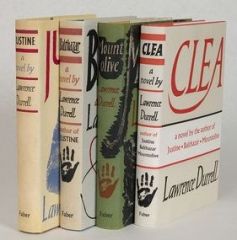
Lawrence Durrell |

